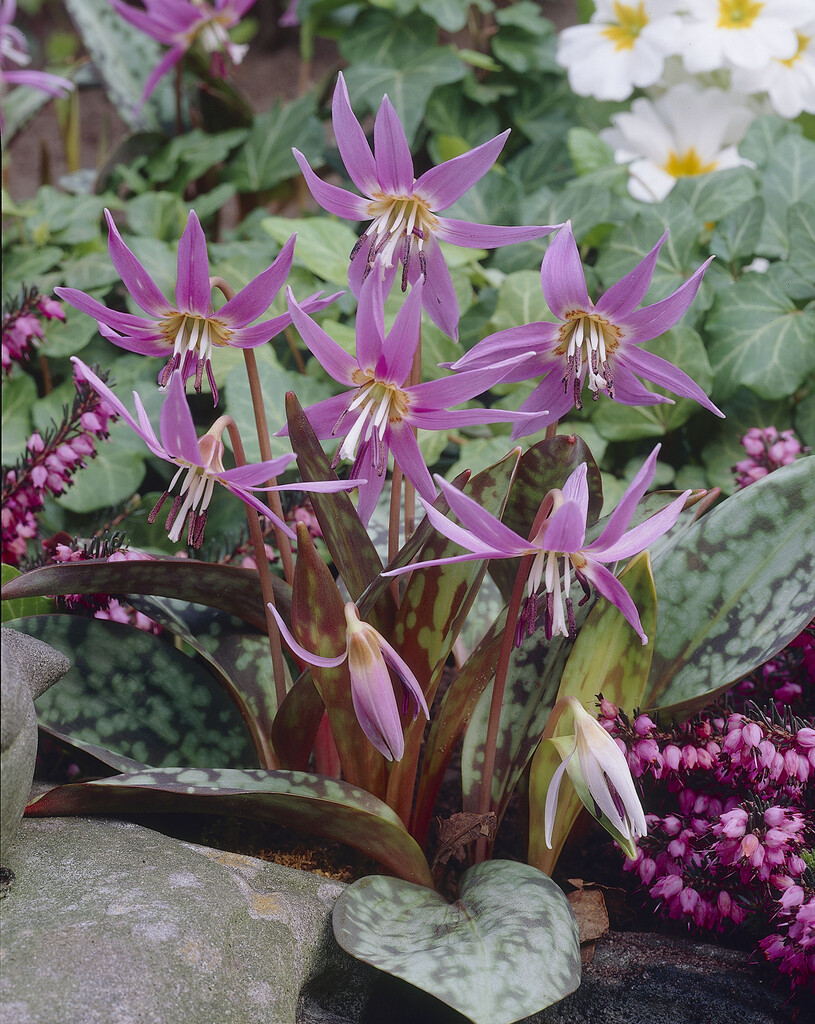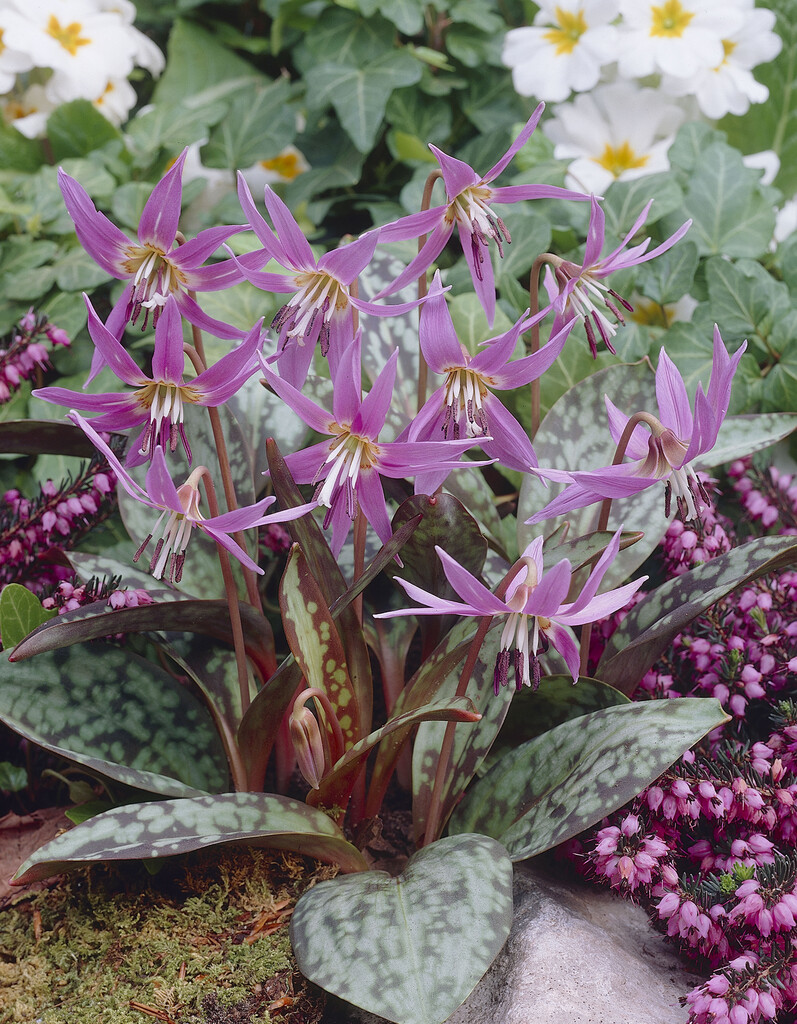Erythronium dens-canis 'Frans Hals'
dog's tooth violet 'Frans Hals'
A bulbous perennial, to 15cm high, with grey-green leaves heavily mottled with bronze. In spring, upright stems bear nodding, violet pink flowers, with spreading, recurved petals and purple stamens
Size
Ultimate height
0.1–0.5 metresTime to ultimate height
2–5 yearsUltimate spread
0–0.1 metreGrowing conditions
Moisture
Moist but well–drainedpH
Acid, Alkaline, NeutralColour & scent
| Stem | Flower | Foliage | Fruit | |
| Spring | Pink Purple | Green Grey Silver Bronze | ||
|---|---|---|---|---|
| Summer | Green Grey Silver Bronze | |||
| Autumn | ||||
| Winter |
Position
- Partial shade
Aspect
East–facing or North–facing or West–facing
Exposure
Sheltered Hardiness
H5Botanical details
- Family
- Liliaceae
- Native to GB / Ireland
- No
- Foliage
- Deciduous
- Habit
- Clump forming
- Potentially harmful
- Ornamental bulbs, not to be eaten. Wear gloves and other protective equipment when handling Pets: Ornamental bulbs, not to be eaten - see the HTA guide to potentially harmful plants for further information and useful contact numbers
- Genus
Erythronium are bulbous perennials with paired, ovate or broadly elliptic leaves, and leafless stems bearing one or more nodding, star-shaped flowers with recurved petals
- Name status
Accepted
How to grow
Cultivation
Plant 10cm deep in fertile, humus-rich, well-drained soil that does not dry out, in partial shade. Bulbs in storage must be kept slightly damp. See bulb cultivation
Propagation
Propagate by division after flowering
Suggested planting locations and garden types
- Cottage and informal garden
- Low Maintenance
- Flower borders and beds
- Underplanting of roses and shrubs
Pruning
No pruning required
Pests
May be susceptible to slugs
Diseases
Generally disease-free
Get involved
The Royal Horticultural Society is the UK’s leading gardening charity. We aim to enrich everyone’s life through plants, and make the UK a greener and more beautiful place.

